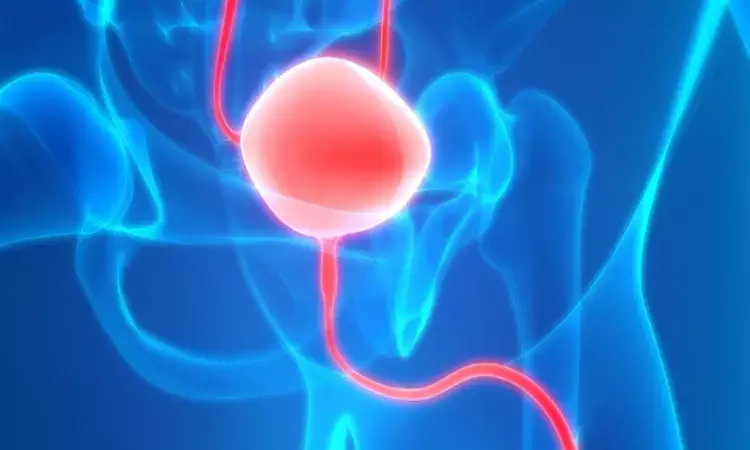- Home
- Medical news & Guidelines
- Anesthesiology
- Cardiology and CTVS
- Critical Care
- Dentistry
- Dermatology
- Diabetes and Endocrinology
- ENT
- Gastroenterology
- Medicine
- Nephrology
- Neurology
- Obstretics-Gynaecology
- Oncology
- Ophthalmology
- Orthopaedics
- Pediatrics-Neonatology
- Psychiatry
- Pulmonology
- Radiology
- Surgery
- Urology
- Laboratory Medicine
- Diet
- Nursing
- Paramedical
- Physiotherapy
- Health news
- Fact Check
- Bone Health Fact Check
- Brain Health Fact Check
- Cancer Related Fact Check
- Child Care Fact Check
- Dental and oral health fact check
- Diabetes and metabolic health fact check
- Diet and Nutrition Fact Check
- Eye and ENT Care Fact Check
- Fitness fact check
- Gut health fact check
- Heart health fact check
- Kidney health fact check
- Medical education fact check
- Men's health fact check
- Respiratory fact check
- Skin and hair care fact check
- Vaccine and Immunization fact check
- Women's health fact check
- AYUSH
- State News
- Andaman and Nicobar Islands
- Andhra Pradesh
- Arunachal Pradesh
- Assam
- Bihar
- Chandigarh
- Chattisgarh
- Dadra and Nagar Haveli
- Daman and Diu
- Delhi
- Goa
- Gujarat
- Haryana
- Himachal Pradesh
- Jammu & Kashmir
- Jharkhand
- Karnataka
- Kerala
- Ladakh
- Lakshadweep
- Madhya Pradesh
- Maharashtra
- Manipur
- Meghalaya
- Mizoram
- Nagaland
- Odisha
- Puducherry
- Punjab
- Rajasthan
- Sikkim
- Tamil Nadu
- Telangana
- Tripura
- Uttar Pradesh
- Uttrakhand
- West Bengal
- Medical Education
- Industry
Nephroscopy versus cystoscopy for bladder stones significantly lowers operative time: Study

China: Although advancements in contemporary antibiotic treatment and diet have lowered the prevalence of bladder stones (BSs) in recent decades, BSs remain the most prevalent kind of stone in the lower urinary tract, accounting for 5 percent of all urinary calculi. According to a new study, both nephroscopy and cystoscopy had good stone removal efficiency, low complication rates, and short hospitalizations. The mean urethral entry for big stone fragments varies depending on the treatment strategy.
This study was conducted by Liping Gou and the team with the objective to examine the safety and efficacy of nephroscopy and cystoscopy in transurethral cystolithotripsy (TUCL) for bladder stones. The findings of this study were published in BMC Surgery.
For the following research Up to January 2021, the PubMed, Web of Science, Embase, EBSCO, and Cochrane Library databases were searched for research evaluating the effect of different kinds of endoscopes on patients undergoing TUCL. The PRISMA statement was followed throughout the search strategy and research selection procedure.
The results of this study stated as follows:
1. The meta-analysis comprised five randomized controlled trials. The findings revealed no difference in stone-free rate (RR = 1.00) between the two groups, as well as nonsignificant heterogeneity (I2 = 0%), and all patients were stone-free.
2. When compared to the cystoscope group, the use of the nephroscope considerably reduced operation time (RR= 26.26), and there was considerable heterogeneity (I2= 87%).
3. There was no significant difference between the two groups in mean urethral entry (RR = 0.66), hospitalization (MD = 0.08), or overall complication rate (RR=1.37).
In conclusion, according to this comprehensive study, both nephroscopy and cystoscopy have a high efficiency of stone removal, a low risk of complications, and a short hospital stay. The mean urethral entry for big stone fragments varies depending on the treatment strategy. The use of nephroscopy, on the other hand, can drastically minimize operational time.
Reference:
Gou, L., Wang, Z., Zhou, Y. et al. Comparison of nephroscopy and cystoscopy used in the treatment of bladder stones: a systematic review and meta-analysis of randomized controlled trials. BMC Surg 21, 448 (2021). https://doi.org/10.1186/s12893-021-01461-3
Medical Dialogues consists of a team of passionate medical/scientific writers, led by doctors and healthcare researchers. Our team efforts to bring you updated and timely news about the important happenings of the medical and healthcare sector. Our editorial team can be reached at editorial@medicaldialogues.in.
Dr Kamal Kant Kohli-MBBS, DTCD- a chest specialist with more than 30 years of practice and a flair for writing clinical articles, Dr Kamal Kant Kohli joined Medical Dialogues as a Chief Editor of Medical News. Besides writing articles, as an editor, he proofreads and verifies all the medical content published on Medical Dialogues including those coming from journals, studies,medical conferences,guidelines etc. Email: drkohli@medicaldialogues.in. Contact no. 011-43720751


